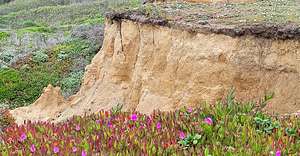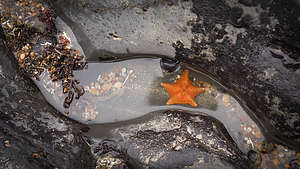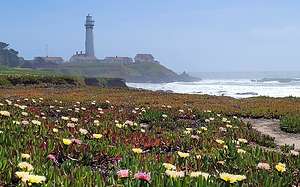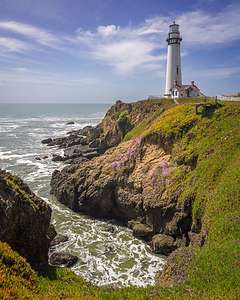- Home
- About
- Map
- Trips
- Bringing Boat West
- Migration West
- Solo Motorcycle Ride
- Final Family XC Trip
- Colorado Rockies
- Graduates' XC Trip
- Yosemite & Nevada
- Colorado & Utah
- Best of Utah
- Southern Loop
- Pacific Northwest
- Northern Loop
- Los Angeles to NYC
- East Coast Trips
- Martha's Vineyard
- 1 Week in Quebec
- Southeast Coast
- NH Backpacking
- Martha's Vineyard
- Canadian Maritimes
- Ocracoke Island
- Edisto Island
- First Landing '02
- Hunting Island '02
- Stowe in Winter
- Hunting Island '01
- Lake Placid
- Chesapeake
- Provincetown
- Hunting Island '00
- Acadia in Winter
- Boston Suburbs
- Niagara Falls
- First Landing '99
- Cape Hatteras
- West Coast Trips
- Burning Man
- Utah Off-Roading
- Maui
- Mojave 4WD Course
- Colorado River Rafting
- Bishop & Death Valley
- Kauai
- Yosemite Fall
- Utah Off-Road
- Lost Coast
- Yosemite Valley
- Arizona and New Mexico
- Pescadero & Capitola
- Bishop & Death Valley
- San Diego, Anza Borrego, Joshua Tree
- Carmel
- Death Valley in Fall
- Yosemite in the Fall
- Pacific Northwest
- Utah Off-Roading
- Southern CA Deserts
- Yosemite & Covid
- Lake Powell Covid
- Eastern Sierra & Covid
- Bishop & Death Valley
- Central & SE Oregon
- Mojave Road
- Eastern Sierra
- Trinity Alps
- Tuolumne Meadows
- Lake Powell Boating
- Eastern Sierra
- Yosemite Winter
- Hawaii
- 4WD Eastern Sierra
- 4WD Death Valley +
- Southern CA Deserts
- Christmas in Tahoe
- Yosemite & Pinnacles
- Totality
- Yosemite & Sierra
- Yosemite Christmas
- Yosemite, San Diego
- Yosemite & North CA
- Seattle to Sierra
- Southwest Deserts
- Yosemite & Sierra
- Pacific Northwest
- Yosemite & South CA
- Pacific Northwest
- Northern California
- Southern Alaska
- Vancouver Island
- International Trips
- Index
- Tips
- Books
- Photos/Videos
- Search
- Contact
Pescadero, CA
Tuesday, March 29, 2022 - 8:15am by Lolo
100 miles and 2.5 hours from our last stop - 1 night stay
Travelogue
 Bluff Trail - James V. Fitzgerald Marine ReserveOur drive down the Pacific Coast Highway took us over the Golden Gate Bridge and through San Francisco and the town of Pacifica before arriving at our first stop, the James V. Fitzgerald Marine Reserve in the small coastal community of Moss Beach.
Bluff Trail - James V. Fitzgerald Marine ReserveOur drive down the Pacific Coast Highway took us over the Golden Gate Bridge and through San Francisco and the town of Pacifica before arriving at our first stop, the James V. Fitzgerald Marine Reserve in the small coastal community of Moss Beach.
The Reserve is considered to be one of the best tide pooling locations in all of California. Unfortunately, our visit wasn’t timed with low tide, when the rocky reef and its long, creviced tide pools are exposed. Tidepooling wouldn’t have been that easy for me anyway in my orthopedic boot, so it was just as well.
 Cypress Trail - James V. Fitzgerald Marine ReserveHowever, we did walk a short distance on the Bluff Trail through a lovely grove of Monterey Cypress trees to a stunning overlook on top of the bluffs
Cypress Trail - James V. Fitzgerald Marine ReserveHowever, we did walk a short distance on the Bluff Trail through a lovely grove of Monterey Cypress trees to a stunning overlook on top of the bluffs
The weather was quite gray and shrouded in clouds, but that actually added to the atmospherics of the grove.
From there we continued along Route 1 through Half Moon Bay to a stunning section of the coast in the town of Pescadero. There was lots to see in Pescadero, but not many places to stay. Fortunately, I had reserved a cute little cottage at the Pescadora Creek Inn.
 Determined to reach the tafoni on Pebble BeachThe weather wasn’t great - damp and cool - so we decided to check in first, and wait for the weather to improve.
Determined to reach the tafoni on Pebble BeachThe weather wasn’t great - damp and cool - so we decided to check in first, and wait for the weather to improve.
The cottage was lovely with a cozy gas fireplace, a claw-footed bathtub, and decorated with period antiques. It was very cozy and comfortable. So, we lit the fireplace and took a quick nap in the feather bed, before heading out to explore the area.
Our first stop was Pebble Beach, a small cove with a pebbly coarse sand beach - hence the name. The multi-colored pebbles are so pretty that the park actually has a large sign warning not to remove the pebbles. I later realized I unknowingly smuggled some in the opening in my boot.
 Tide Pools at Pebble BeachI managed to hobble my way down the stairs leading to the south end of the cove where the tide pools are. It was low tide, so we were in luck. With my stupid boot, I wasn’t able to get too close, but I did manage to find a tiny little red starfish.
Tide Pools at Pebble BeachI managed to hobble my way down the stairs leading to the south end of the cove where the tide pools are. It was low tide, so we were in luck. With my stupid boot, I wasn’t able to get too close, but I did manage to find a tiny little red starfish.
However, what this beach is most well known for, and the reason we wanted to come here is that it is one of the few places on the coast that has tafoni - uniquely textured sandstone with holes and honeycomb-like structures. The other place we have seen these intriguing rocks is Salt Point State Park along the Sonoma Coast.
.thumbnail.jpg) Tafoni on Pebble BeachThe tafoni was about another 100 yards north on the beach, requiring me to hobble over wet pebbly sand and unlevel rocks. With my orthopedic boots, trekking poles, and determined face, I must have been quite a sight, but I did eventually get there and it was worth it!
Tafoni on Pebble BeachThe tafoni was about another 100 yards north on the beach, requiring me to hobble over wet pebbly sand and unlevel rocks. With my orthopedic boots, trekking poles, and determined face, I must have been quite a sight, but I did eventually get there and it was worth it!
There are several theories as to how these amazing rocks were formed, but the most common one is salt weathering. According to this theory, saltwater collects on the surface of the permeable sandstone from the nearby waves and mist. As the saltwater evaporates, the salt it leaves behind works its way into the rock pores, where it crystallizes and pushes the pores open further. Wind, rain, and tidal water also contribute to their weathering.
 Tafoni on Pebble BeachI’m not sure if the tide or people did it, but many of the honeycomb openings were filled with the lovely multi-colored pebbles this beach is named for. It was like a curio cabinet.
Tafoni on Pebble BeachI’m not sure if the tide or people did it, but many of the honeycomb openings were filled with the lovely multi-colored pebbles this beach is named for. It was like a curio cabinet.
After we got back up the stairs to the parking lot, we decided to walk south along the Arroyo de los Frijoles Trail along the bluff towards Bean Hollow State Beach, which is about a mile away. We decided to just walk as far as I felt able, well actually less than that as I had to get back.
.thumbnail.jpg) Tide Pools along the Arroyo de los Frijoles TrailAt one point Herb went down a steep trail to an extensive set of tide pools. Unfortunately, I was unable to follow, but it was pretty cool photographing him from above.
Tide Pools along the Arroyo de los Frijoles TrailAt one point Herb went down a steep trail to an extensive set of tide pools. Unfortunately, I was unable to follow, but it was pretty cool photographing him from above.
The weather was still pretty lousy - mist and clouds - but we continued down the Pacific Coast Highway to Pigeon Point Lighthouse, just 4 miles further south.
We made the turn onto Pigeon Point Road and followed along the edge of the bluffs for about three quarters of a mile before stopping for a very nice view of the lighthouse, with lots and lots of wildflowers in the foreground.
 Pigeon Point LighthouseFrom there we continued on to the parking lot for the lighthouse. At 115-feet tall, it is one of the tallest lighthouses in the United States. Before its construction in 1872, there were numerous shipwrecks along this rocky section of the coast. One of the ships that went down was the 175-foot clipper ship, the Carrier Pigeon, which was so close to completing its journey from Maine around Cape Horn to San Francisco before running around on some offshore rocks. I imagine that is where the lighthouse’s name came from.
Pigeon Point LighthouseFrom there we continued on to the parking lot for the lighthouse. At 115-feet tall, it is one of the tallest lighthouses in the United States. Before its construction in 1872, there were numerous shipwrecks along this rocky section of the coast. One of the ships that went down was the 175-foot clipper ship, the Carrier Pigeon, which was so close to completing its journey from Maine around Cape Horn to San Francisco before running around on some offshore rocks. I imagine that is where the lighthouse’s name came from.
 Pigeon Point LighthouseThe lighthouse was first lit on November 15, 1872 using an 8,000 pound Fresnel lens, which has 1,008 prisms and stands 16 feet tall. The lighthouse was operated by the Coast Guard until 1995, when it was transferred to the California State Parks system. Today, the lighthouse is lit only once a year, usually in mid-November, and large crowds of photographers come to photograph its 24 radiating beams of light.
Pigeon Point LighthouseThe lighthouse was first lit on November 15, 1872 using an 8,000 pound Fresnel lens, which has 1,008 prisms and stands 16 feet tall. The lighthouse was operated by the Coast Guard until 1995, when it was transferred to the California State Parks system. Today, the lighthouse is lit only once a year, usually in mid-November, and large crowds of photographers come to photograph its 24 radiating beams of light.
Today the old lighthouse staff housing buildings have been converted to a hostel run by Hosteling International. I wish we had known that when planning this trip as It would have been very fun to stay here.
From the lighthouse parking lot we took a short walk to a boardwalk that led out to the end of a point, overlooking a steep wildflower-covered ravine with the tall white lighthouse towering above. It was my favorite perspective of all.
There is one more good location to view the lighthouse favored by many photographers. It’s just a short 0.3-mile drive further down Highway 1 to a pullout on the west side of the road. A bride and groom had already beaten us to it.
It had been a very full day with many cool things to see. Now it was back to our cozy cottage at the Pescadero Creek Inn.
- 1 of 2
- next ›
Pescadero location map in "high definition"
Javascript is required to view this map.
